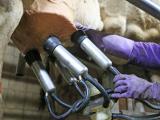Mar 1, 2012
Bangladesh reports its fourth human H5N1 case
Bangladesh has reported its fourth human case of H5N1 avian flu infection, involving a 40-year-old man who works in a live bird market in Dhaka, the capital. After the man sought medical care for a cough, polymerase chain reaction testing of respiratory samples identified the infection, according to a Feb 27 statement from the Bangladesh Institute of Epidemiology, Disease Control, and Research (IEDCR). The patient is now symptom-free, the statement said. Bangladesh's first human H5N1 case was reported in 2008, and two more cases were identified last year. None of the cases have been fatal. The World Health Organization (WHO) has not yet recognized the case. The WHO's current global H5N1 count stands at 589 cases with 348 deaths.
Feb 28 WHO cumulative H5N1 case count
H5N1 hits backyard poultry in Bhutan
Bhutan has reported an outbreak of highly pathogenic H5N1 avian flu affecting backyard poultry, according to a report from the World Organization for Animal Health (OIE) today. The outbreak, in Chakha district, killed 35 birds in January, and 86 additional poultry were culled to prevent disease spread. A national laboratory confirmed the disease via real-time polymerase chain reaction on Jan 10. The report did not specify why officials delayed reporting the outbreak to the OIE. Chakha is in southwestern Bhutan and borders the West Bengal district of India. Bhutan last experienced an H5N1 outbreak in December, according to the OIE.
Report: H1N1 hitting harder than H3N2 in 4 European countries
Although pandemic 2009 H1N1 (pH1N1) has made up only 1% of flu viruses circulating in France, Ireland, Spain, and the United Kingdom this flu season, it has accounted for 10% of hospital cases and a high percentage of severe cases, according to a report today in Eurosurveillance. Of 1,432 sentinel specimens analyzed from the four countries, 14 (1%) were pH1N1 and 1,219 (85%) were H3N2. But of 199 lab-confirmed hospitalized cases, 20 (10%) were caused by pH1N1, compared with 108 (54%) caused by H3N2. And of the hospitalized pH1N1 patients, 19 (95%) were admitted to intensive care, compared with 33 (30%) for H3N2. In the previous flu season (2010-11), the share of hospitalized pH1N1 cases was only 1.5-fold higher than the share of cases in the community, according to the report.
Mar 1 Eurosurveillance report
Study details better 2009 H1N1 immune response in seniors
An in-depth study in the Journal of Virology on antibody response shed more light on why fewer older people got sick during the 2009 H1N1 pandemic. Researchers with the US Food and Drug Administration and the University of Pittsburgh used a host of advanced antibody testing methods to analyze extra serum samples from a wide age range of patients that were collected at two Pittsburgh hospitals and pediatric outpatient clinics during the second wave of the pandemic before vaccination began. They also conducted similar tests on ferrets that were infected with the virus to gauge the development of antibodies. Infection with pH1N1 in adults older than 70 induced antibodies with broader epitope recognition in internal genes and hemagglutinin 1 (HA1) receptor binding domain compared with younger age-groups. The findings support the hypothesis that older people have long-term memory B cells and possibly long-lived plasma cells that cross-reacted with the novel virus and were rapidly recruited and activated following infection. They wrote that the cells could have undergone somatic hypermutation during earlier exposure to H1N1 viruses that circulated until the 1957-58 flu season or that exposure to or vaccination against 1976 swine flu could have generated long-term memory B cells that cross-reacted with the pH1N1 virus.
Feb 29 J Virol abstract
Raw milk Campylobacter outbreak total reaches 80 cases
An outbreak of Cambylobacter illness associated with raw milk from a Pennsylvania dairy has grown to 80 cases, according to Food Safety News (FSN) today. The total represents an increase of 3 cases since CIDRAP News last reported on the outbreak Feb 16. Case totals by state are now: Pennsylvania, 70; Maryland, 5; West Virginia, 3; and New Jersey, 2. At least nine patients have been hospitalized, and the last known illness onset date is Feb 1. The outbreak has been traced to Your Family Cow dairy in Chambersburg, which halted sales of raw milk products Jan 27 but was allowed to resume production Feb 6 after passing inspections.
Mar 1 FSN story
Feb 16 CIDRAP News Scan on outbreak





















